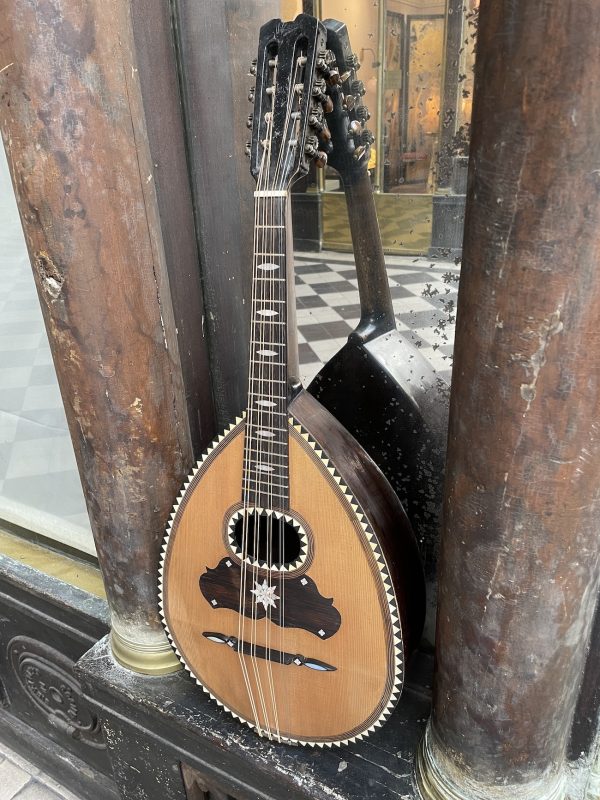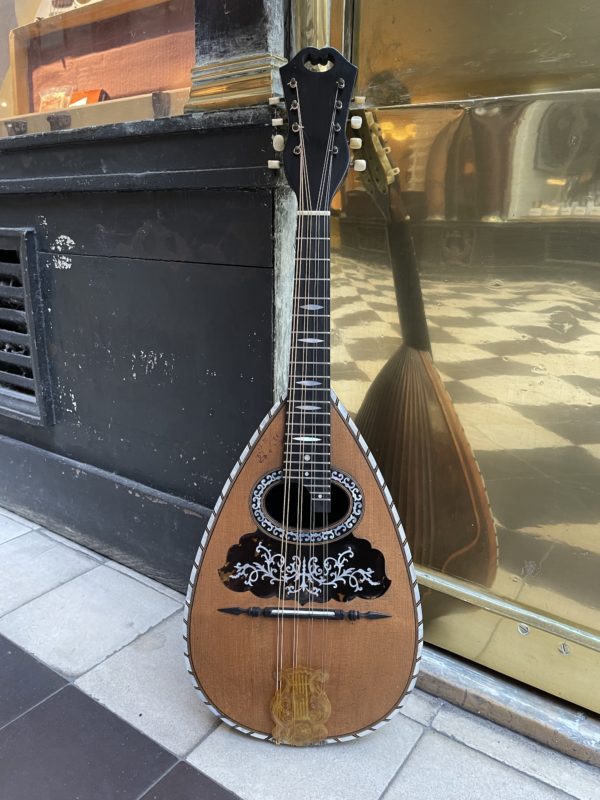European
THE EUROPEAN MANDOLIN
Neapolitan, Roman or Venetian, the mandolin is above all an Italian affair – Wolfgang Amadeus Mozart (1756-1791)’s infamous aria with a rare mandolin solo in Don Giovanni proves it! It was in the same 18th century that this instrument, descending from a long line of plucked string instruments, reached its peak.
The science of musical instruments, organology, describes the mandolin as a lute with a short neck and a pear-shaped body, with strings doubled in four choirs tuned in fifths, most often played with a plectrum. In other words, a charming half-pear with a bright and sparkling sound!
Antonio Vivaldi (1678-1741) wrote a fabulous concerto in D Major, while the devil himself, Niccolo Paganini (1782-1840), would write a Sonata Concertata more musical than many of his virtuosic pieces. Finally, all of the tender hearts who played for their “bella ragazza” under Italian balconies did the rest. The name to remember is that of the Italian luthier of Austro-Hungarian origin and living in Rome, Luigi Embergher (1856-1943). His instruments are the benchmark for the making of the modern classical mandolin. As proof, Maria Feodorovna, the Queen Mother of the Tsar of all Russia Nicholas II played on a luxurious model, encrusted with all kinds of wonders that dowager princesses relish.
Mandolin orchestras were very popular in the last third of the 19th century until the 1950s in Europe, especially in Italy but also in Spain, Portugal and France and then also in the United States. This is where the traditional Italian mandolin will undergo a complete mutation to adapt to new repertoires. It had already appeared as a flat-bodied instrument of stripped-down construction in many Europe-made models, aimed towards the folk music repertoire of the aforementioned countries. Thus, in France, the luthiers Jacobacci made many of these small flat mandolins intended for serenades and other accompaniments of so-called “typique” music. We sometimes even find them in musette ensembles, or in Corsican music.
Today, the classical mandolin is still very popular in Japan, but its use still goes beyond this rich and beautiful repertoire around the world. It is an instrument to rediscover for the beauty of its Latin and Mediterranean charms.



